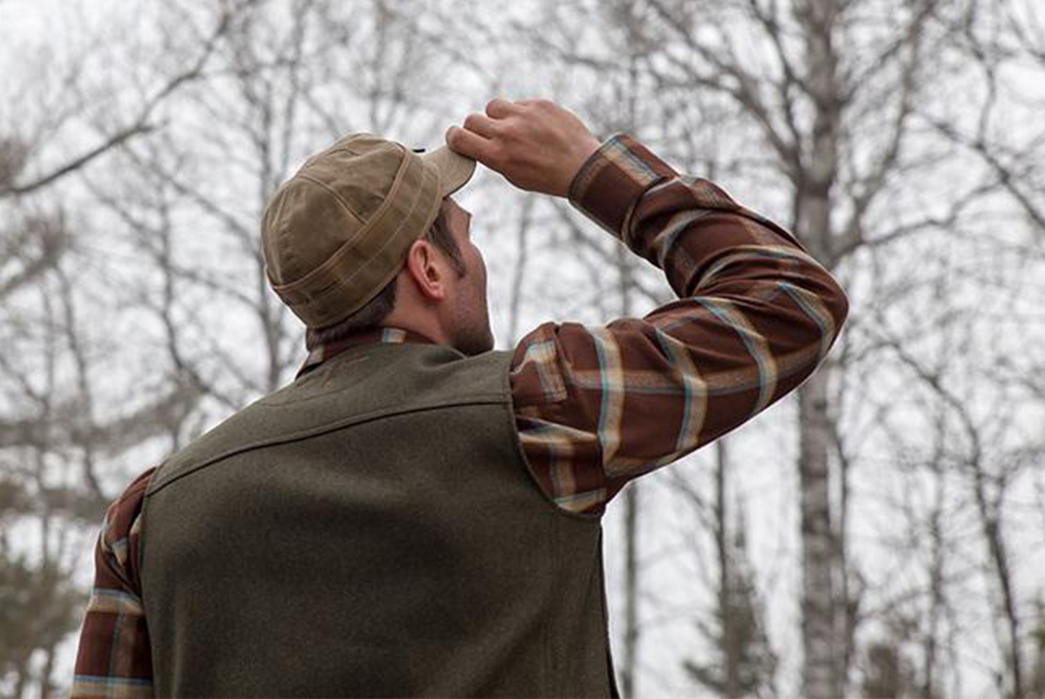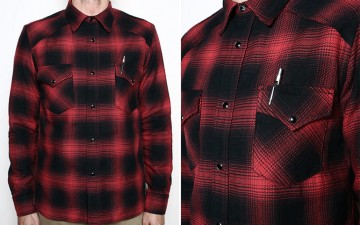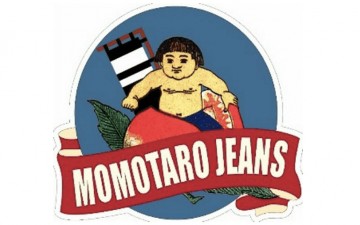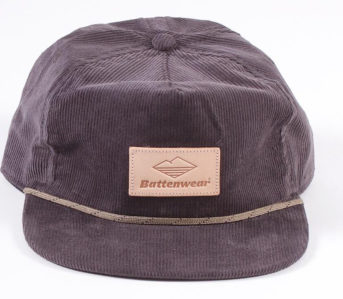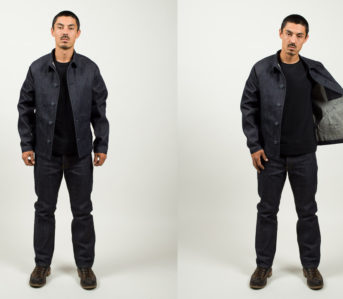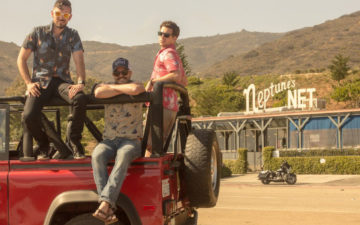Winter is nigh and we’ve got cold-weather caps on the noggin. Specifically, the Stormy Kromer and its story. Named after railroad engineer George “Stormy” Kromer, the funny little hunting cap aimed to fix a specific problem of its namesake creator and hasn’t changed much since its inception.
But was George really the inventor? Kromer had tasked his wife, Ida, with making a hat that wouldn’t fly off his head in the face of a stiff breeze, and it was she who came up with the simple but effective solution of modifying existing baseball caps. There’s plenty more history that unfolds after this took place in Wisconsin in 1903, but first, let’s straighten out exactly how it all started.
The Untold History of Stormy Kromer
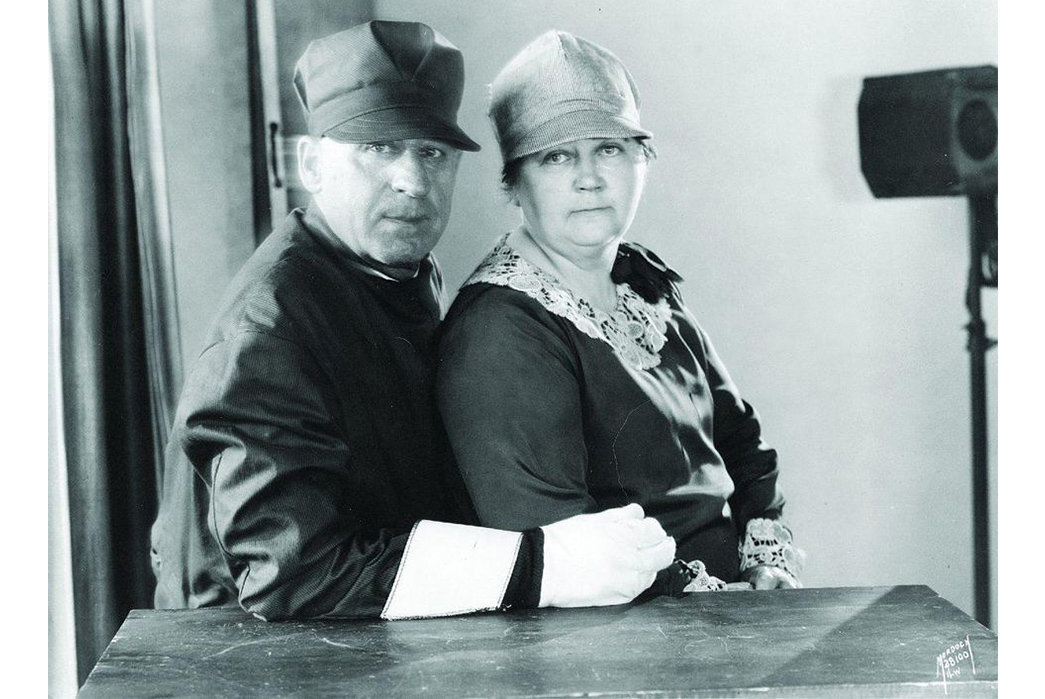
George and Ida Kromer
See, the whole reason George (nicknamed ‘Stormy’ after his infamous temper) even became a railroad engineer is because of Ida. When the pair started seriously dating, Ida’s father insisted she couldn’t wed an amateur baseball player, so George got himself a “proper” job working for the Chicago and Northwestern Railroad and with that, they were hitched.
After some time working outdoors, he began to realize there wasn’t a single hat out there that fit the bill for him and his coworkers— either they disappeared with the wind or weren’t keeping their ears and everything in between warm enough. Wearied of losing so many lids, George went home and sought Ida’s help in making something that he could finally rely on.
Taking its blueprint from a standard baseball cap, the rendition that the pair cooked up would be stitched from six panels with a higher crown and a pull-down ear-band that tied at the front, anchoring the headpiece and keeping its wearer cozy at the same time.
The very first Stormy Kromer proved to be a success, and with George no longer losing his head over losing his hat, his colleagues in Kaukauna were soon lining up to have their own made, too. Before long, engineers from all over the region were donning the cap, and it grew to be not only a useful item for the outdoors but a symbol of culture and community. “It became the hat and the symbol of the railroad people of the Northwest,” the brand explains. Indeed, even the construction of the cap helped to coin a nickname for local workers (they became known as the ‘six-pointers’) and it provided an easy means of recognizing each other when they were out of the state.
With all this success, you’ll hardly be surprised to learn that the demand for Ida’s reliable invention increased substantially, and in 1919, the duo moved production to a North Broadway workshop in Milwaukee, where they employed a small group of staff to keep things ticking over.
Transitioning the Kromer – A Hat Without A Train
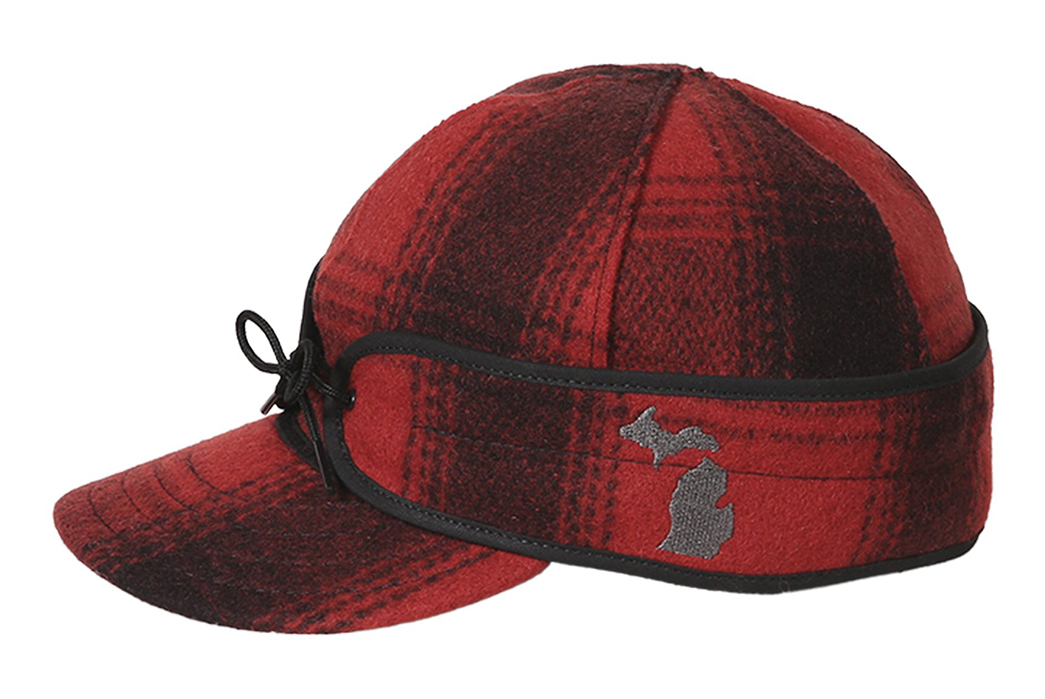
The original Stormy Kromer cap
Now, there are few companies that have stuck around for more than a century without experiencing a rough patch or two, and Stormy Kromer is no exception. In the mid-1940s, the rise of the automotive industry inevitably led to a decline in railroad usage— anyone who had the means was investing in a car, and so over two decades, commercial train travel dipped over 80%. Of course, less rail usage meant fewer jobs, and as the demand for George and Ida’s headgear on the tracks plunged, they sought to introduce new styles that would appeal to the likes of welders and pipeline engineers.
Then, in 1965, George’s health was declining, and so the pair made the decision to sell the company to businessman Richard Grossman. Richard kept production chugging along quietly for nearly 40 years, until 2001, when the brand’s sales had dropped to such a level that he saw no solution other than to shut up shop. Teetering on the edge of closure, the company and its employees were fresh out of options until a longtime fan swooped in to save the day.
The story goes like this: one day, Bob Jacquart was having a bite to eat with a fellow outdoor enthusiast who was harping on about what a pity the company’s collapse would be – its winter hats had served them both well for years. Bob insisted they find a phone number for Stormy Kromer’s office so he could enquire about buying the rights to its caps, and just like that, he’d made an offer before the day was out, saving the business. As the owner of an eponymous sewing facility in Michigan, Bob had much of the groundwork needed to get things up and running already at his disposal.
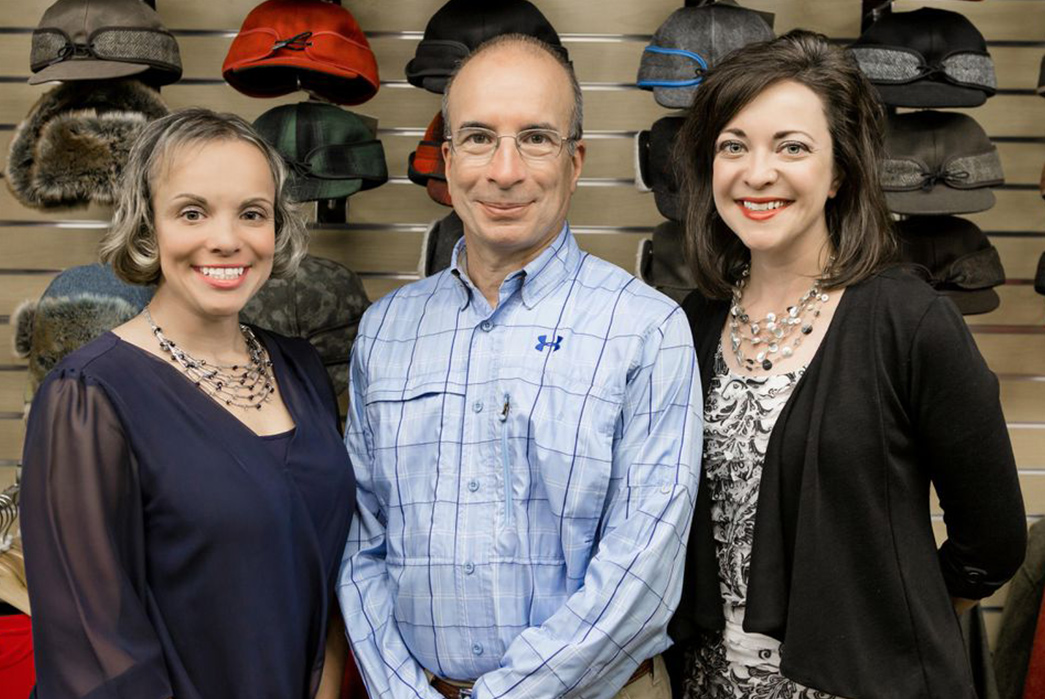
Bob Jacquart and his daughters
Some might have expected waning quality or signs of corner-cutting with such a turbulent period, but not for Stormy Kromer. Bob didn’t want to compromise on the values that had upheld the brand for almost 100 years, so he relocated manufacturing to his native Ironwood, Michigan in order to oversee everything. Within a month, he’d restarted production and initiated the process of increasing the company’s output tenfold. It rose from around 3,000 – 6,000 pieces produced annually to a bulk of 50,000 and continues to grow today.
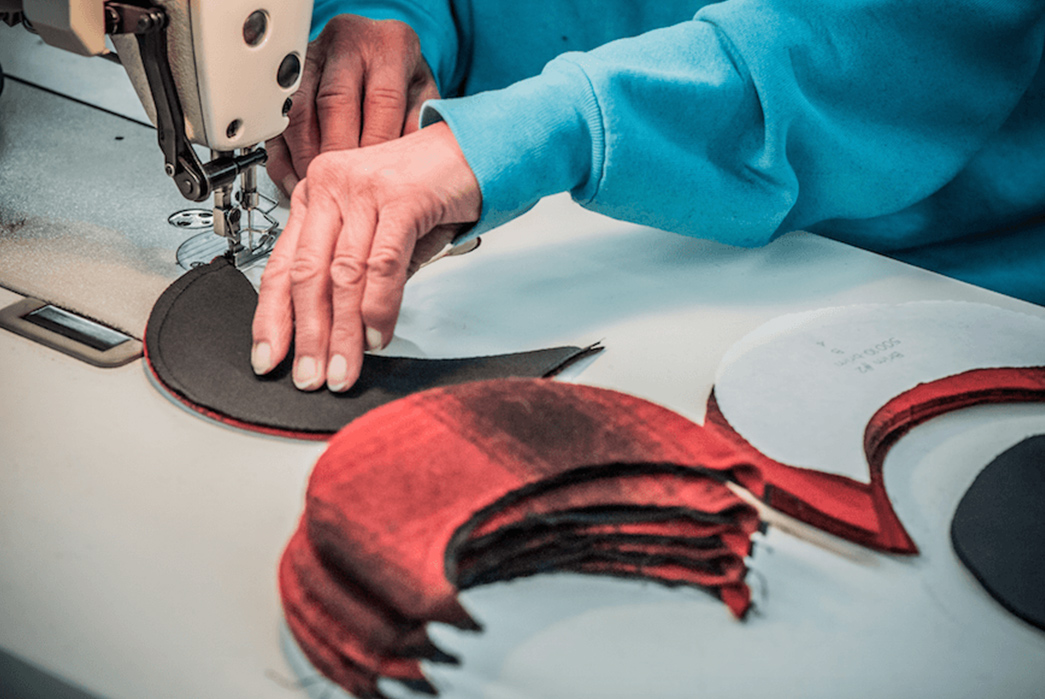
Stormy Kromers in the making
Revival and Expansion
These days, if you head to the Midwest you’ll find the company’s Six-Pointers are a dime a dozen and have become something of a tradition in the region. Upwards of 100,000 caps are now sold each year, and customers can browse more than 116 different fabric and color combinations—a far cry from the sole $9 model from a century ago. Even former U.S. President Barack Obama is a proud owner after the company gifted him several editions during a presidential visit to the state in 2011.
The brand has also expanded its offering to include outerwear, tees, a collaboration with Merrell bootmakers and even a hugely popular canine collection. Bolstering your range is all well and good, but the Stormy Kromer cap was designed by a woman, so surely there ought to be a line for women, too? Though it took the company a little while to think up the concept, they finally introduced a collection in 2005, featuring a wider size range and variety of designs including one named after its inventor herself.
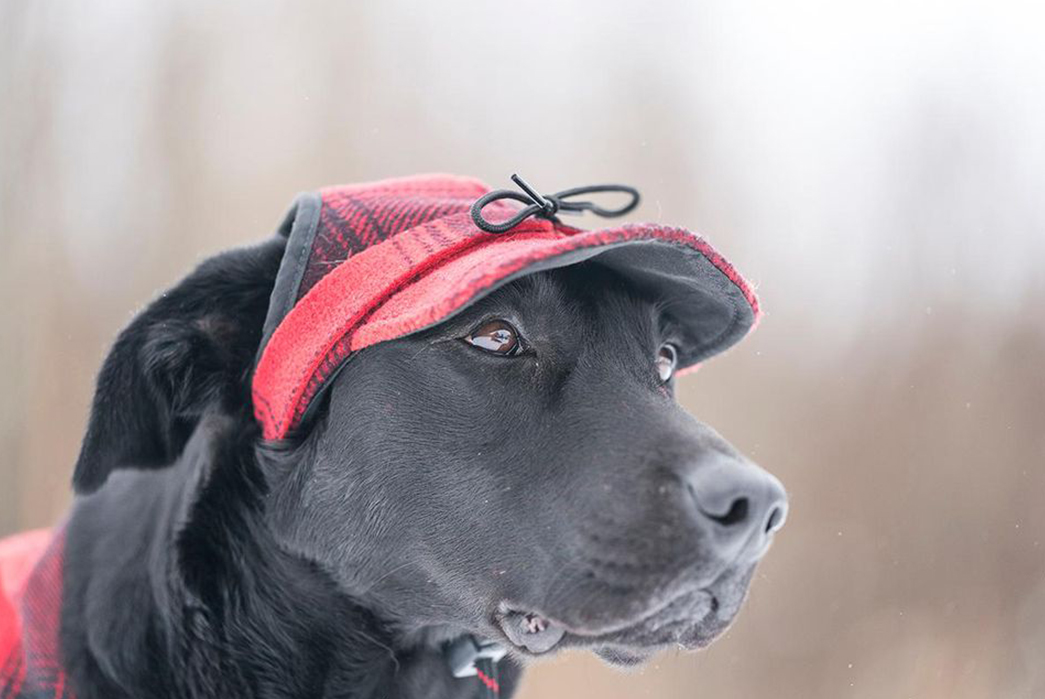
If you mutt get your dog a hat, make it a Stormy Kromer
With its story so far done and dusted, we bet you’re wondering how exactly these caps are made and what they’re fashioned from nowadays. Well, Mr Jacquart’s employees still work from the same 13-piece pattern created by George and Ida all those years ago (usually in cotton-flannel or wool), only now they use automated cutting and embroidering techniques before each component is machine sewn by a team of seamsters. The brand continues to offer a lifetime warranty and unique three-year insurance policy which, once registered, will cover you for the loss or theft of your six-pointer.
Even just recently, Stormy Kromer lined Ironwood’s main street in its original black and red check on a Saturday in October to celebrate ‘Plaidurday’, proving that the brand is still going strong and continues to be a local legend.
You can purchase the original Stormy Kromer cap, along with a whole range of apparel, on the brand’s website.

